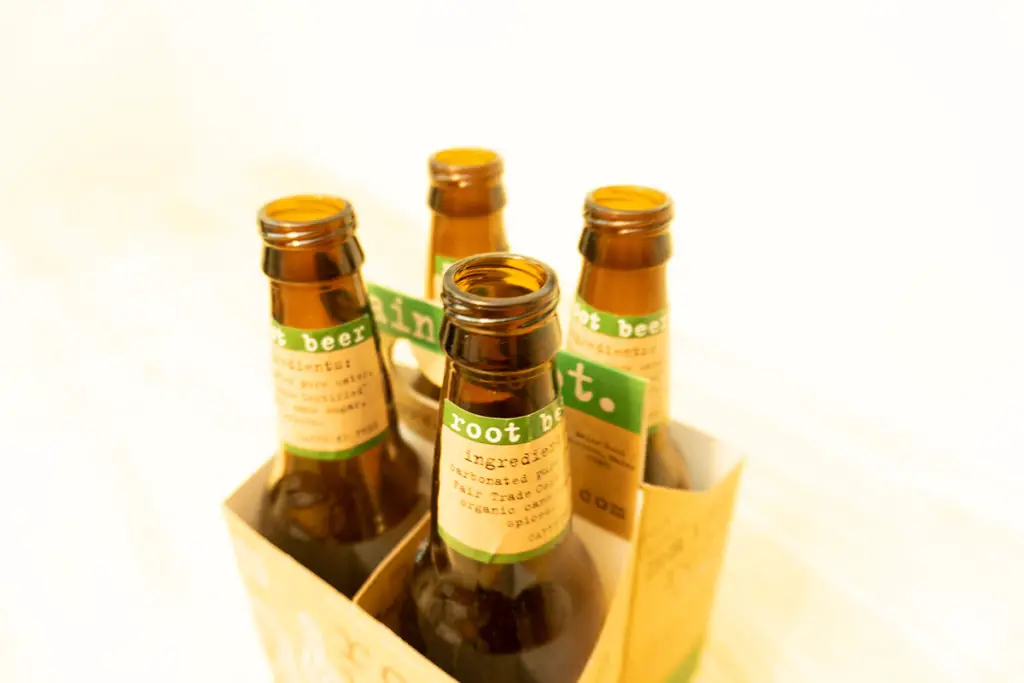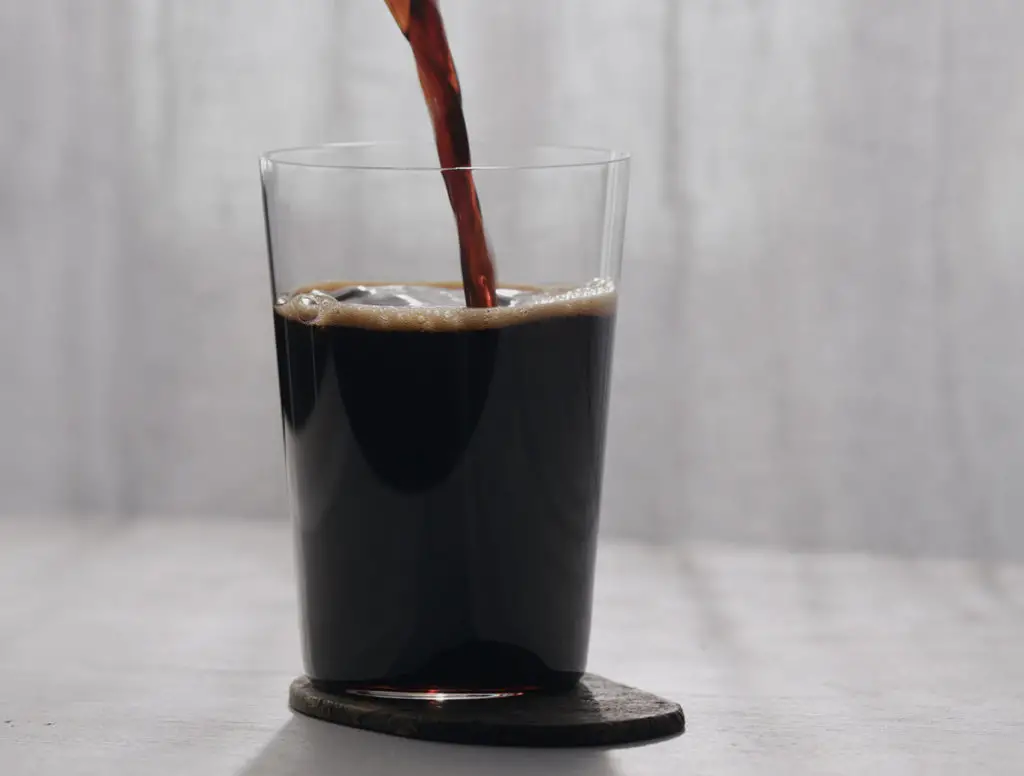When you think of the word “beer,” you think of an alcoholic drink, but that’s not necessarily the case with all drinks with the word beer in their name. One example of this is root beer. While there are alcoholic root beers available, the beverage is most commonly non-alcoholic, so why is it called “root beer?”
Root beer is named for its main ingredient, sassafras root. Inventor Charles Hires wanted to advertise the drink as “root tea.” However, he found that a large target demographic, coal miners from Pennsylvania, preferred alcoholic beverages and therefore rebranded the drink as “root beer.”
In this article, I’ll explore the history of root beer and how it got its name in further detail. By the time you’re done with this article, you’ll have a better idea about where this popular beverage came from and how it got its name.

The Genesis of Root Beer
As mentioned above, root beer is made primarily using the sassafras root. The sassafras tree (Sassafras albidum) is a tree that is native to North America and several U.S. states, including Maine, Texas, Iowa, and Florida.
The plant was used extensively by Native American tribes for medicinal purposes, including:
- Using the leaves to treat wounds.
- Using the bark as a dye and a flavoring.
It was also used in cooking, including as an ingredient in curing meats and as a flavoring in traditional gumbo recipes.
For making root beer, however, the main ingredient was the tree’s root.
Native American peoples had been making drinks with sassafras roots for many years before the arrival of Europeans, and the drinks were consumed for both their taste and medicinal properties. Europeans used sassafras root for making beverages as far back as the 1500s.
Recipes for root beer were available for decades before the first commercial drink was sold. Local versions were available in confectionery stores in the 1840s, three decades before Hires’s drink was marketed.
However, while the drink existed for years beforehand, Charles Hires is credited as the inventor of root beer because he was the first person to successfully create a commercial version of the drink. Hires’ recipe can be credited for the drink’s success, and he was the first person to market it with the name “beer.”
That said, it should be noted that there’s precedent for calling root beer, well, beer.
The “Beer” in Root Beer
Hires chose to call his drink “beer” specifically to appeal to Pennsylvania coal miners. However, while the name may seem to be nothing more than clever branding, it can be argued that even non-alcoholic root beer has a claim to using the word “beer.”

Drinks with sassafras root in them, as discussed above, were produced for centuries before root beer. However, even combinations of sassafras root and soda were available in stores for some decades before Hires’s drink.
It’s believed that these drinks were made in the tradition of brewing small beers.
Small beers are essentially beers that have significantly lower alcohol content. These beers have been brewed since the Middle Ages and were popular in Europe until the 19th century. They were made of water, yeast, grain, and natural flavorings like herbs, berries, and bark.
For a significant period of time, small beers were the most popular beverage in Europe because they were safer to drink than water. Drinking water was often contaminated with bacteria and effluvia, but the brewing process killed off this bacteria, making the final product a healthy alternative to drink.
The flavorings were often chosen to increase the nutritional qualities of the drink.
Small beers were brewed by first boiling the flavoring in water and cooling the resultant blend. The boiling killed off any bacteria present in the water. Then, yeast was added to the brew, and the fermentation reaction resulted in the production of sugar and alcohol.
These beverages were drunk by all people, regardless of age. They were especially popular among workers because they were flavorful but could be drunk in large quantities without getting drunk.
To qualify as a small beer, the drink could only have a maximum of 2.8% ABV, significantly lower than other beers.
When settlers moved to the Americas, they brought the tradition of brewing small beers with them. In fact, some sources indicate that the passengers on the Mayflower drank small beer rather than water due to concerns about the safety of the water onboard.
In the Americas, settlers didn’t have free access to barley and hops as they did in Europe and had to look for native plants they could use to brew small beers.
They often used honey, cane sugar, and molasses for sweeteners, while the bitterness was provided by plants such as dandelion, burdock, and, notably, sassafras.
Like small beers, Hires’ drink included a range of flavorings meant to benefit a person’s health. Indeed, Hires initially set out to create a miracle drug that would cure all illnesses before discovering the perfect recipe for root beer.
Root Beer’s Popularity
Hires is credited with root beer’s success because, apart from creating an attractive recipe, he was also an expert at marketing his drink. As mentioned above, he changed the name from the initially planned Hires Root Tea to appeal to a key market segment.

He debuted his drink at the Philadelphia Centennial Exposition in 1876, passing out free mugs of the beverage to attract customers. Its popularity led to him being able to sell bottled root beer, as well as a concentrated flavored syrup that could be used in soda fountains. Among his most innovative products were No products found. (Amazon), which people could use to brew their own root beer at home.
The name initially outraged the leaders of the growing Temperance Movement in the country. However, Hires, a teetotaler himself, moved to advertise root beer as a non-alcoholic “temperance drink” that was a healthy alternative to alcohol.
Root beer’s popularity grew following the imposition of Prohibition in 1920 when it became a popular option for people who could no longer access alcoholic drinks legally. The popularity of Hires’ drink made him a multi-millionaire and led to the growth of several competitors.
It should be noted that not all these competitors sold sassafras-based root beer.
Barq’s, for example, sold a sarsaparilla-based version instead. Because of this difference, and to prevent legal issues with Hires’ business, they initially chose to advertise their drink without the term “root beer,” simply labeling the drink as “Barq’s.”
Sarsaparilla and Root Beer
Sarsaparilla, specifically, the Smilax ornata vine, is most commonly used to make the drink of the same name. The flavor of the drink is relatively similar to root beer, and sarsaparilla is sometimes considered a variation of root beer.

Unlike the sassafras plant, which is native to North America, sarsaparilla is instead native to Mexico and Central America. However, it was known to Native Americans, who believed it to have medicinal properties.
While root beer is mainly popular in North America and the United States, in particular, sarsaparilla is made in countries around the world, including the United Kingdom (where it was popular as an alternative to alcoholic beverages during the heyday of the Temperance movement), Australia, and Asia.
It should be noted that classic American sarsaparilla wasn’t actually made from the sarsaparilla plant.
Instead, it was made with a combination of sassafras and birch oil, which is why it’s often considered a derivative of root beer. The drink was originally marketed as a medicine before becoming popular as a carbonated beverage.
Root Beer Today
While root beer was initially given the name due to its main ingredient, the sassafras root, no commercially available root beer today uses it as part of their recipe. The reason for this change is simple.
In 1960, the U.S. Food and Drug Administration banned the use of safrole in foods and drugs intended for human consumption.
Safrole is the oil that gives sassafras bark and root, and, therefore, traditionally made root beer, its unique taste. Tests on animals found that it was a carcinogen and caused liver damage, leading to the prohibition on its use.
Following this ban, commercial root beers replaced sassafras root with artificial flavorings. It should be noted that sassafras root and extract with safrole removed can still be used in food and drugs, including root beer. However, as mentioned above, it’s the safrole that gives the root its flavor.
Without it, brands have no choice but to opt for artificial options.
Final Thoughts
Root beer gets its name from the main ingredient in the original recipe, sassafras root, and from a bit of clever marketing on the part of Charles Hires, the man who popularized the drink in the United States. However, given that root beer has its roots in the brewing of small beers, it has other claims to use the word “beer” in its name.
Despite the name, most root beers are non-alcoholic and caffeine-free. However, like beer, it has a frothy and foamy head. That said, it’s possible to find alcoholic brands of root beer.
